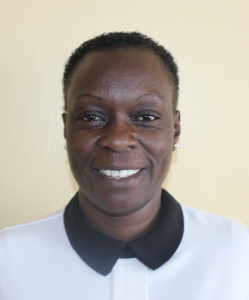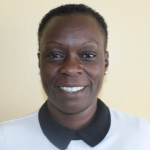The 402 students at Kokoyo Primary School carry the burden of finding and collecting sufficient water for use at their school, but the water they are collecting is making them and their teachers sick.
"The pupils carry water from home, which they draw from different springs, and the water is not safe for their health. They wake up very early to go and look for water before reporting to school," reported our field officer Mary Afandi.
After arriving at school with water they collected from home to be used throughout the day for drinking still, there is more work to do.
A hand-dug well in a neighbor's compound is open for one hour each morning so students can collect water for the school kitchen to make meals, but then the rest of their water must come from the local stream while they miss out on classes. But similar to other open water sources within the community, the stream where students collect water only provides contaminated water that is making people sick.
Waterborne diseases like diarrhea, stomachache, and typhoid are common and have resulted in absenteeism and hence a decline in students' academic performance.

"It was in 2019 when I was diagnosed with typhoid, which took [a] long time to heal. It made me repeat class five because I stayed home for two months," said 13-year-old Eugine M. (shown above).
“A significant proportion of diarrhoeal disease can be prevented through safe drinking-water and adequate sanitation and hygiene.” - WHO
And students are not the only ones affected. Teachers are also suffering the consequences of consuming contaminated, unsafe water.
"We are tired of being sick in the community. We use a lot of money for medication, and sometimes we lack the money to buy medicines," said Esther Shikomere, the 59-year-old headteacher, standing by the neighbor's dug well that the school has limited access to for cooking.

The school needs a well of its own so students and teachers can hopefully regain some of their health and time in class to make progress academically towards brighter futures.
What We Can Do:
New Well
We conducted a hydrogeological survey at this school and the results indicated the water table beneath it is an ideal candidate for a borehole well. Due to a borehole well's unique ability to tap into a safe, year-round water column, it will be poised to serve all of the water needs for this school's large population, even through the dry months.
The school will help collect the needed construction materials such as sand, rocks, and water for mixing cement. They will also provide housing and meals for the work team, in addition to providing local laborers. We will complement their materials by providing an expert team of artisans and drilling professionals, tools, hardware, and the hand-pump. Once finished, water from the well will then be used by the school’s students and staff for drinking, handwashing, cooking, cleaning, and much more.
Handwashing Stations
The student health club will oversee the two new handwashing stations we will provide, and make sure they are kept clean and in working condition. The club leaders will fill the handwashing stations with water daily and make sure they are always supplied with a cleaning agent such as soap or ash.
VIP Latrines
We will construct two triple-door latrine blocks using local materials that the school will help gather. Three doors will serve the girls and three doors will serve the boys. All of these new latrines will have cement floors that are designed to be easy to use and to clean. And with a borehole right on school property, there should be enough water to keep them clean.
Training on Health, Hygiene, COVID-19, and More
We will hold a one-day intensive training session with students, teachers, and parents. This training will cover a wide range of topics including COVID-19 symptoms, transmission routes, and prevention; personal and environmental hygiene; and the operation and maintenance of the borehole, latrines, and handwashing stations. There will be a special emphasis on handwashing.
Our team of facilitators will use a variety of methods to train, including participatory hygiene and sanitation transformation, and asset-based community development. We will initiate a student health club, which will prepare students to lead other pupils into healthy habits at school and at home. We will also lead lectures, group discussions, and provide illustrative handouts to teach health topics and ways to promote good hygiene practices within the school including handwashing and water treatment. We will then conduct a series of follow-up trainings before transitioning to our regularly scheduled support visits throughout the year.
We and the school strongly believe that all of these components will work together to improve standards at this school, which will help lead to better student academic performance and will help unlock the opportunity for these students to live better, healthier lives.





 Borehole Well and Hand Pump
Borehole Well and Hand Pump
 Rehabilitation Project
Rehabilitation Project

































